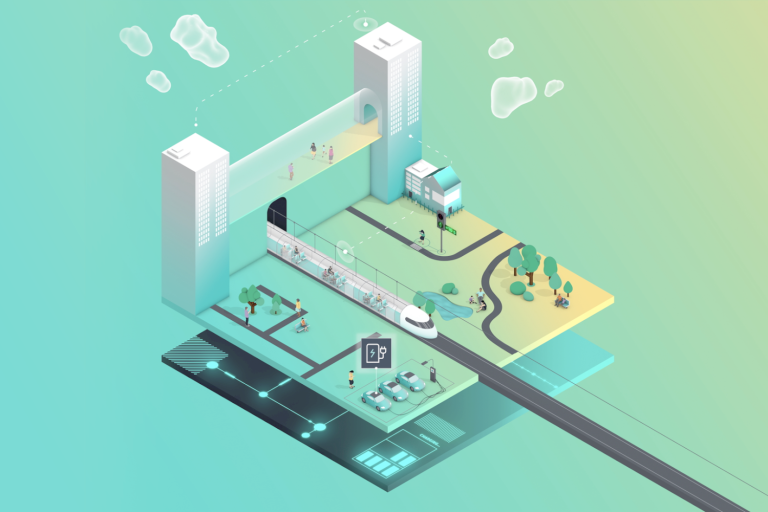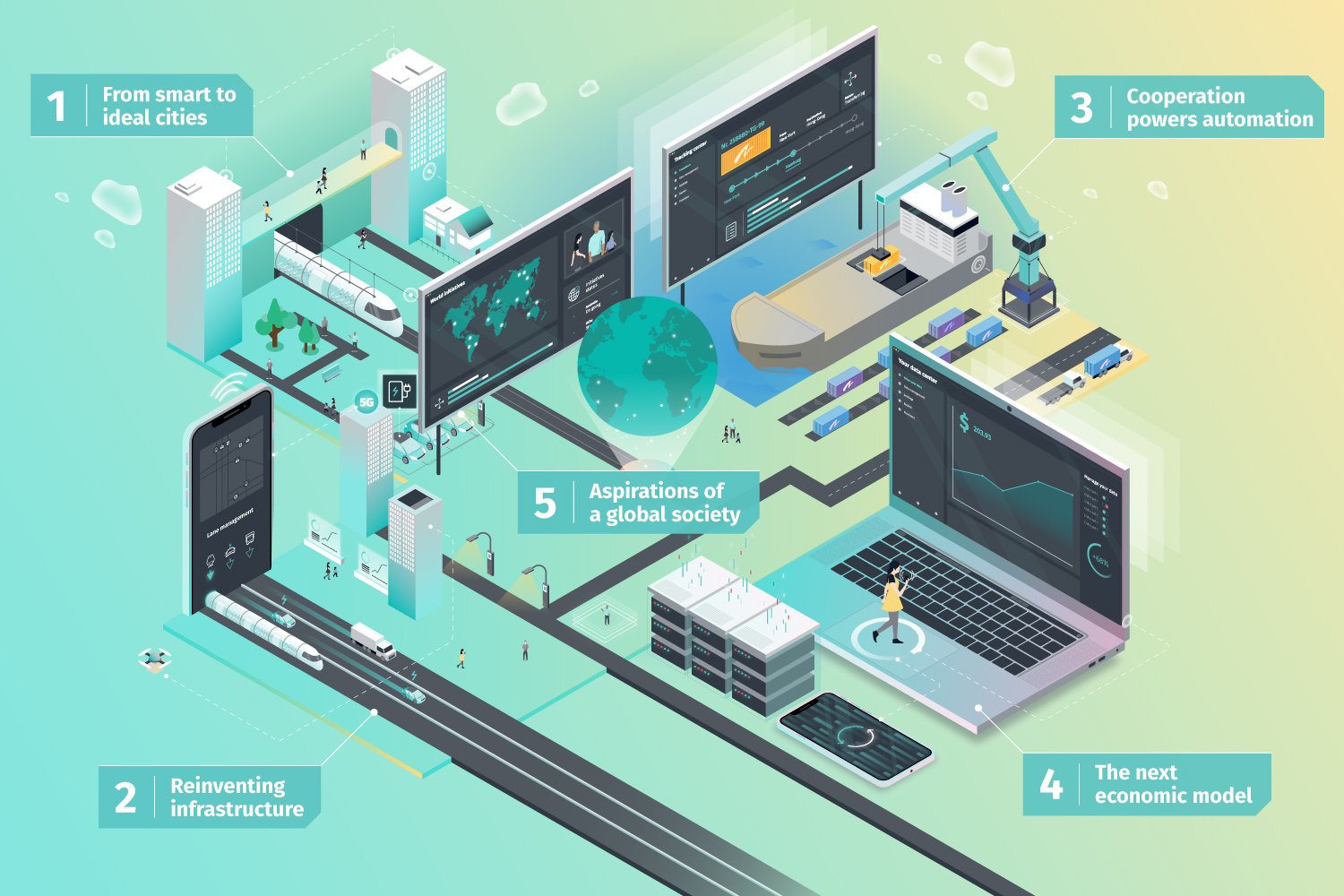Location Trends Report: Envisioning a more connected world in 2019

Every year, our Trend and Innovation Research Team takes an in-depth look at the changes we will soon experience in the ways we live, travel and work.
Our annual study analyzes what exactly these changes mean for society, and determines how location intelligence will make a difference to life around the planet. This year, we’ve identified five macro-level developments that will redefine the way our world is connected.

From “smart” to “ideal” cities
Recent years have witnessed the birth of so-called “smart cities,” where governments and businesses collect and redistribute data in a bid to make cities more efficient and optimize their services. The goal is to make urban environments cleaner, greener, safer, more mobile, and overall better places to live.
Cities are now entering the next stage of this process, which we term “ideating cities.” Beyond greater capabilities and efficiency, smart city technologies have the potential to greatly improve quality of life for city inhabitants.
Citizens now have the opportunity to envision how they want to live and what they want their cities to be like in the future. Smart city leaders such as Helsinki are already taking steps in this direction, by using co-creation techniques to develop intelligent mobility solutions that better take into consideration citizen desires.
Reinventing infrastructure
As traditional modes and models of transport continue to decline, existing infrastructure has no choice but to adapt and innovate in order to serve more technologically advanced (and demanding) replacements. This new “physical internet” will provide a holistic and connected end-to-end ecosystem, capable of renewing, rebuilding and reimagining how a city moves and functions.
While transitioning to a new model, both old and new infrastructure must co-exist. The differing priorities of these models may temporarily lead to competing and more polluting systems. Governments must work together with the private sector to deploy an adaptable and flexible infrastructure, which is needed to support future forms of living and moving.
Cooperation powers automation
In recent years, IoT-driven automation has been in the inception phase, requiring new data standards, communication frameworks and advanced network solutions. Now the business is moving towards solving use cases through cross-industry collaboration and strategic partnerships.
Future autonomy requires us to reach data globalization through data standardization, and open yet trusted communication. Openness to collaboration, integration, interoperability, and exploring opportunities across all industries and sectors are crucial prerequisites for an autonomous world. The goal is to create an open, connected world across geographical and political borders.
The next economic model
As citizens become ever more aware of the power of their data, they will be increasingly reluctant to part with it unless the benefits of that transaction are clear and without risk. This awareness, however, may also create personal opportunity: services such as Datawallet helps consumers gain control of their data, and allows them to capitalize on its value.
The growing data economy is at present dominated by B2B models. In exchange for highly personalized services, consumers are effectively treated as data providers. In spite of this, they often have little visibility or control over how their data is collected and used.
This paradigm will need rethinking. Increasing awareness among consumers of the value of their data may create new business opportunities, with consumers themselves becoming business partners.
Aspirations of a global society
To help technology deliver a more positive future, we need to embrace a common and global ethics framework applicable to both data collection (by enforcing privacy regulations and anonymization) and training data choices.
Increasing awareness of potential risks should also mean placing greater emphasis on developing solutions that are ethically and morally sound.
The debate continues as to what exactly constitutes “ethical and responsible” artificial intelligence development. There will be no simple answer to this question, which will vary significantly across different cultures and countries. The question, therefore, remains: how can we make technology a unifying force for good that bridges divided societies and nationalities to ultimately unify humanity?
To read our in-depth 2019 Location Trends Report, download a copy here.
Have your say
Sign up for our newsletter
Why sign up:
- Latest offers and discounts
- Tailored content delivered weekly
- Exclusive events
- One click to unsubscribe


